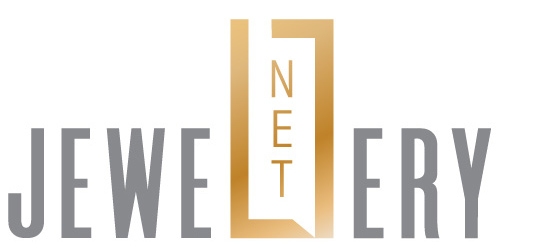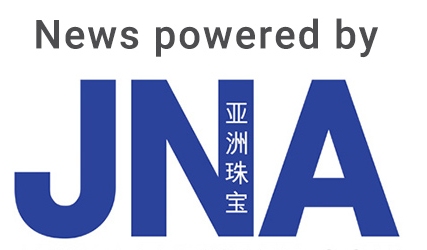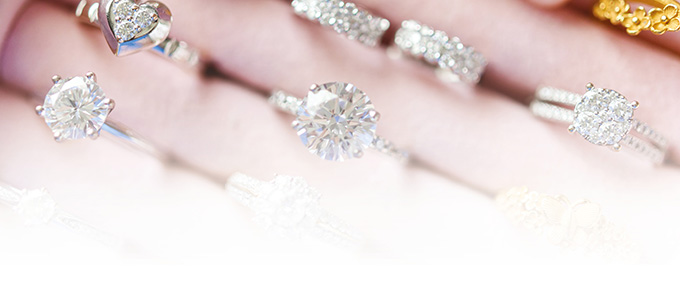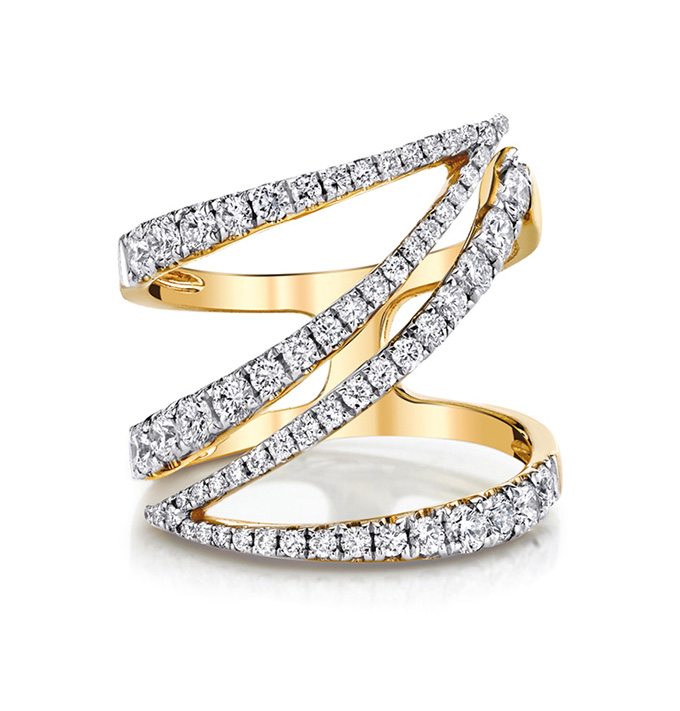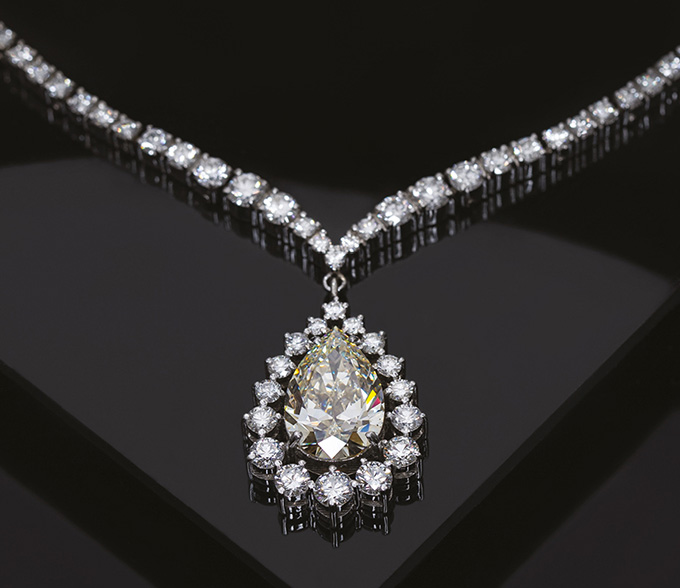US jewellery manufacturers are counting on buyers’ inherent desire to celebrate meaningful moments and their emotional connection to jewellery to support growth amid challenging times.
This article first appeared in the JNA May/June 2025 issue.
The US jewellery sector has proven its grit and resilience over the years, braving through several market-moving scenarios such as wars, recessions and pandemics, to name a few. Recently, the US’ status as one of the largest jewellery markets in the world has once again been put to the test. Ongoing geopolitical and macroeconomic woes coupled with current developments like record-high gold prices and US President Donald Trump’s tariffs are taking their toll on the market, gradually chipping away at consumer confidence and overall sentiment.
The Tax Foundation, an international research think tank based in Washington DC, said that as of April 10, threatened and imposed counter tariffs affect US$330 billion of US exports.
The group warned that if fully imposed, such tariffs would slash US gross domestic product (GDP) by 0.2 per cent. Combined US-imposed and other countries' retaliatory tariffs, meanwhile, could reduce US GDP by 1.0 per cent.
According to Deloitte, tariffs will likely raise inflation without increasing domestic production in the near term. Rising prices could dent purchasing power and consumer spending growth next year. "Finally, what is also worrying now is the lack of clarity on the final tariff framework itself. This uncertainty is starting to weigh on consumer and business sentiment," noted the firm.
Bracing for tougher times ahead, US-based jewellery manufacturers are adopting a wait-and-see stance, adding that the industry remains stable. This guarded optimism stems from generally favourable fundamentals in the jewellery sector.
According to data from the US Bureau of Economic Analysis, the US jewellery market grew 5 per cent to US$85.41 billion in 2024, up from US$81.32 billion in 2023.
Jewellery imports were also promising, having reached US$22.75 billion last year, up 10.17 per cent from US$20.65 billion in 2023. Exports, meanwhile, dipped 5.74 per cent to US$13.63 billion from US$14.46 billion in 2023, government data further revealed.
Jewellers are also banking on traditionally strong business operations, advanced manufacturing techniques and the inherent allure and value of jewellery to bolster consumer engagement and connections.
State of the trade
The US jewellery manufacturing sector is on a steady path to recovery, buoyed by stable demand in the customised and upmarket segments.
California-based Christian Tse Designs & Mfg Inc, which counts major jewellery brands among its clients, is seeing strong demand for both high-end and personalised jewellery from buyers in New York, Los Angeles and Miami. It also has clients in Europe and Asia, particularly Hong Kong and Japan.
“People are looking for quality, traceability and faster turnaround – and that is where domestic manufacturing shines,” explained Christian Tse, president of his eponymous company. “Meanwhile, e-commerce has opened doors to younger buyers who want personal and meaningful purchases, not just a branded piece. Direct-to-consumer brands are driving a lot of that growth.”
He revealed that US buyers favour custom bridal jewellery alongside timeless platinum and gender-neutral pieces while Europeans lean heavily towards craftsmanship and heritage. Asians, for their part, are partial to luxury and investment pieces, especially fancy colour diamonds.
“Price points vary, but design and authenticity tend to move products fastest across the board,” remarked the company official.
Linus Drogs, president of Michigan-based Au Enterprises Inc and chairman of The Jewelry Symposium, agreed that consumer interest in custom-made designs remains high but cited an overall weakness in US demand. Au Enterprises specialises in customised jewellery, which it distributes in the domestic market.
“The custom jewellery sector remains strong, thanks to good customer support,” he noted. “However, demand in the US market is soft across most sectors, including luxury brands. Jewellery manufacturers and retailers continue to reduce their capacity due to continued industry consolidation.”
Trump’s tariffs
US-based manufacturers who source items from affected countries such as China for raw materials or Canada and Europe for diamonds could face tailwinds arising from hefty tariffs imposed by the US government.
On April 9, Trump announced a 90-day pause on higher-band tariffs to enable trade negotiations, with the exception of China. A 10 per cent base levy on all imports, meanwhile, remains in force as of press time.
Jewelers of America, the national trade association representing US-based jewellery businesses across the supply chain, expressed concerns about the impact of sweeping tariffs on trade relationships and the US jewellery industry in general.
According to David Bonaparte, president and CEO of Jewelers of America, the association supports government efforts to “hold trading partners accountable” and boost US-based manufacturing, but the tariff approach is bringing about instability.
“Should tariffs hit the country's critical jewellery imports, these could also harm relationships with key industry partners like India,” he remarked.
Bonaparte further explained that while tariffs are shouldered by US importers, these are ultimately passed on to consumers through higher prices. With mounting costs, Americans are likely to cut back on discretionary spending such as jewellery.
Jewellery packaging tariffs imposed during Trump’s first term in 2018 took a toll on the businesses and customers of some Jewelers of America members, Bonaparte added.
“With majority of materials needed to produce jewellery sourced from overseas, and the bulk of jewellery manufacturing taking place outside the US, tariffs on imports would be disruptive to the diamond and jewellery supply chain,” he stated.
Christian admitted that it is a challenge as some key materials used in jewellery production such as specific alloys or diamonds are not readily available in the US or are not at the quality or scale that the company needs.
“We have worked around it by tightening relationships with domestic suppliers, recycling more metals in-house and looking for alternative sources outside the tariff zones,” he noted. “But in some cases, there are no easy substitutes. So, it is about staying nimble and keeping our process as lean as possible.”
Another obstacle are tit-for-tat tariffs, which could translate to higher prices for consumers.
Christian explained that tariffs slapped on US exports make it more challenging for US companies to compete globally. Import duties, meanwhile, could result in higher material costs.
The tariff scenario has added more unpredictability to the US market, according to Drogs. As a result, manufacturers are seeking to minimise tariff costs by onshoring a portion of their production while leveraging offshore rates for labour-intensive products.
“Jewellery manufacturers can absorb some tariff costs in the short term, but not in the long term,” he added. “Eventually, consumers will see prices rise to cover the costs of import and export tariffs.”
Over time, retaliatory tariffs could prompt some manufacturers to adjust their strategies to reduce or eliminate specific tariffs. Other industries, meanwhile, are relocating production back to the US or have initiated long-term plans to do so, continued Drogs.
More than the tariffs though, soaring gold prices are an even bigger threat to the jewellery business, he added.
Strength and relevance
Bonaparte said the full extent of how tariffs could impact costs to consumers is yet to be determined but trade organisations such as Jewelers of America is seeking clarity to keep their members informed.
“We are preparing comments and providing input to the Trump administration and USTR representatives to help guide our country’s trade policy toward holding our trading partners accountable and restoring fairness for American businesses,” he noted. “We feel that this can be accomplished without sowing uncertainty that could raise prices for American families.”
Drogs agreed, adding that import tariffs make US manufacturing more globally dynamic in the short term. He added that onshoring could continue to grow as tariffs increase and expand.
US manufacturers should continuously invest in technology to boost local and global competitiveness – something that Drogs' company adheres to.
For his part, Christian said uncertainties such as tariffs are compelling companies to adapt and improve policies and operations. His company has invested heavily in automation and technology to stay ahead.
“The whole industry is being pushed to modernise faster,” he stated. “For us, it is a chance to double down on innovation and efficiency, but not all jewellery companies have that flexibility.”
Christian Tse has developed a new line of modular men’s engagement pieces using unconventional
materials like Inconel, a nickel-chromium-based superalloy. The company is also integrating hot isostatic pressing into its platinum casting process, which Christian described as a “game changer” for durability and quality.
Ultimately, having its manufacturing base in the US will always be a plus factor as it affords the company speed, control and the ability to work closely with its clients, especially luxury brands requiring precision and short lead times.
“We are not waiting on overseas shipments or dealing with customs delays. Customers increasingly care about how and where things are made. Being US-based is not just about logistics — it is part of our identity and value proposition. It shows our standards and our commitment to doing things right,” remarked Christian.
